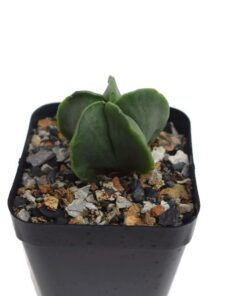Opuntia Microdasys Bunny Ear cactus plant
₹99.00
Out of stock
Email when stock available
Opuntia Microdasys The Bunny cacti is native to northern Mexico and desert regions stretching into Arizona. This plant has the appearance of a shrub, and spreads out to cover between 2-5 feet of ground as a mature plant. Named for its visual appearance, the Bunny Ear Cactus, also called the Polka-Dot Cactus, has the scientific name of Opuntia microdasys. The spines come off with a simple touch, and are best removed from flesh with tweezers.
Opuntia Microdasys How It Looks: This cactus has no central stem or leaves. The individual segments that constitute the cactus body are oval-shaped pads from which additional segments form. These new segments always grow in pairs, giving new growth areas the appearance of bunny ears. The newest segments grow in a red color and mature to dark green as they grow. Flowers will always sprout from the terminal ends of segment pads.
The Polka-dot Cactus covers its mature pads with closely spaced glochids, or small mounds of prickles that are designed to detach when impacted by something. Once fully formed, the glochids form on the new plant segment. The glochids are so loosely attached that a strong breeze can cause them to go airborne. Caladium can be a good companion
Flowering: Flowers only bud at the termination points of fully formed segments. Budding begins in late spring and culminates in early summer with 2-inch wide blossoms. These are a creamy yellow in color, and fade to peach once fertilized. Flowers will turn into 2-inch-long fruits varying from purple to red in color. Bloom’s encouragement is not needed.
Bunny Ear Cactus Care
| Temperature: | This cactus enjoys temperatures ranging from 70-100°F (21-37°C) but demands cooler temperatures during the winter months. Starting in the late fall, this cactus should be kept between 50-65°F (10-18°C), and away from central heating vents. The cooler spell is demanded over the course of the entire winter, during which time the segments of the cactus will turn a light gray color. Failure to provide these controlled winter conditions will result in plant death the following spring. |
| Light: | Demands full light growing for most of the year, except during the winter cycle. For the plant’s health, light should be reduced to partial sun during this time. |
| Watering: | The Polka-dot Cactus is a desert species. It should be given water on a regular basis during its first season in a new pot. This will help it to create a strong root system. The soil should be kept moist, but not soggy. After the first season, more sporadic watering is required. During the winter cycle, the cactus should not be watered at all, with watering to resume in the early spring. |
| Soil: | Like most cacti, this specimen demands sandy soil bases that drain easily. It is usually happy with the pre-packaged cactus soil found in common hardware stores. To increase drainage for a picky plant, mix in a 1:1 ratio of perlite or bark. |
| Fertilizer: | Monthly feeding of low nitrogen fertilizer. Fertilization should stop one month before the planned winter cycle for the plant’s health. |
| Re-Potting: | Re-potting should take place in the summer after the year’s bloom has finished. Remember to water the plant regularly to promote the growth of a healthy root system during its first year in the new pot. |
| Humidity: | Prefers low humidity conditions. Consider running a dehumidifier in the room where the cactus lives to provide it with the most ideal conditions possible. |
| Propagation: | Any fully grown pad from this cactus may be broken off cleanly in the early summer and re-potted for propagation purposes. Cuttings work best when grouped in three or more, and should be buried an inch deep in the soil. Remember to water regularly to promote the growth of a healthy root system in the first year after propagation. |
| Color | Green |
|---|---|
| Growth Pattern | Up right Straight |
| Ideal location | Full sun |
| Origin Country | India |
Add a review Cancel reply
You must be logged in to post a review.

















1 review for Opuntia Microdasys Bunny Ear cactus plant